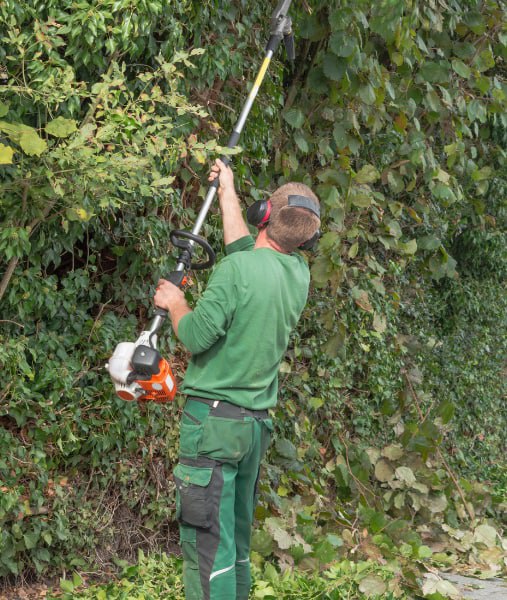
Introduction: As arborists and tree care specialists at Hawkhurst Tree Surgeons, we understand the importance of maintaining the health, beauty, and safety of the trees that grace your landscape. Tree crown reduction is a valuable pruning technique that requires expertise and precision to achieve the desired results while ensuring the tree’s well-being. In this blog post, we will delve into the benefits of tree crown reduction and share some best practices to help you make informed decisions about this essential tree care practice.
What is Tree Crown Reduction? Tree crown reduction is a selective pruning method designed to reduce a tree’s canopy’s overall size and spread. Unlike tree topping, which indiscriminately removes large branches, crown reduction focuses on carefully removing specific branches to maintain the tree’s natural shape and structure.
Benefits of Tree Crown Reduction:
- Safety: One of the primary benefits of crown reduction is enhanced safety. By reducing the canopy’s size, the risk of falling branches during storms or heavy winds is significantly reduced, minimising potential hazards to people and property.
- Structural Integrity: Properly executed crown reduction improves the tree’s structural integrity, ensuring the remaining branches can withstand environmental stresses such as wind and heavy snow.
- Light Penetration: Crown reduction allows more sunlight to penetrate the canopy, benefiting the tree and the surrounding plants by promoting healthier growth and diversity.
- Improved Aesthetics: By shaping the tree’s canopy, crown reduction can enhance the tree’s overall appearance and complement your landscape design.
- Long-Term Health: Removing dead, diseased, or overcrowded branches through crown reduction promotes the tree’s long-term health, reducing the risk of infestations and diseases.
Best Practices for Tree Crown Reduction:
- Consult a Professional: Tree crown reduction requires expertise and experience. Consult a certified arborist from Hawkhurst Tree Surgeons to assess your tree’s condition and recommend the appropriate pruning approach.
- Timing Matters: Crown reduction is best performed during the dormant season, typically in late winter or early spring, when the tree is less susceptible to stress and diseases.
- Avoid Over-Pruning: Over-pruning can lead to stress and declining tree health. Our skilled arborists understand the proper amount of foliage that should be removed to achieve the desired results without harming the tree.
- Preserve the Central Leader: For trees with a central leader, preserving this main trunk ensures the tree maintains its natural growth habit and stability.
- Post-Pruning Care: Proper aftercare is essential to support the tree’s recovery and growth after crown reduction. Regular watering, mulching, and proper fertilisation can aid in the healing process.
Conclusion: Tree crown reduction is a valuable tree care technique that offers numerous benefits, from enhanced safety and aesthetics to improved tree health. When performed by certified arborists from Hawkhurst Tree Surgeons, this method can help maintain the long-term beauty and vitality of your trees. If you have any concerns about your trees or are considering crown reduction, don’t hesitate to contact our expert team for professional advice and quality tree care services.
Call us on 01580234694 or click here to complete our contact form and see how we can help with your tree’s needs.